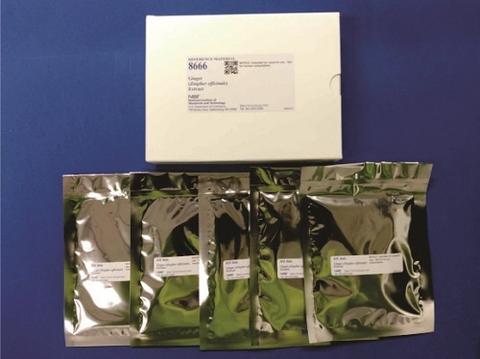A New Control for Measuring Active Compounds and Contaminants in Ginger Root
RM 8666 Ginger (Zingiber officinale) Extract

A new NIST reference material for ginger, a popular remedy for nausea, provides values for arsenic, mercury, and lead, helping manufacturers ensure that their products are safe for consumption.
Because ginger is a root, it can accumulate these substances, which can be harmful to humans, from the soil in which it grows. The reference material has also been analyzed using liquid chromatography with ultraviolet absorbance detection for gingerols and shogaols, the active ingredients in ginger, which also give it its distinct odor and flavor. Manufacturers of ginger spice and ginger remedies can use RM 8666 to check their measurement methods and the development of new measurement methods.
This reference material was developed in collaboration with the National Institutes of Health Office of Dietary Supplements (ODS), which was mandated by Congress to fund the development of reference materials and methods for dietary supplements. Because NIST has long experience in and facilities for this purpose, the work is done in NIST labs. NIST will also use RM 8666 in an upcoming interlaboratory study in collaboration with the standards organization AOAC International. NIST will provide the reference material to industry labs, which will test the material and submit anonymized data to NIST. The results will inform NIST and ODS about community needs and contribute to the establishment of standardized test methods.
A unit of RM 8666 consists of five packets, each containing approximately 3 grams of Zingiber officinale (ginger rhizome) extract that can be stored at room temperature.

